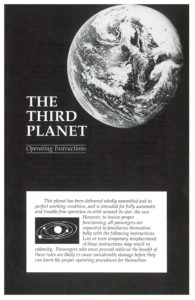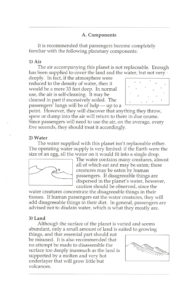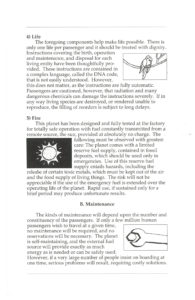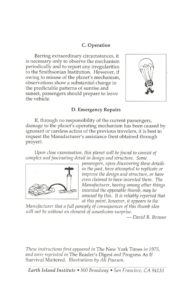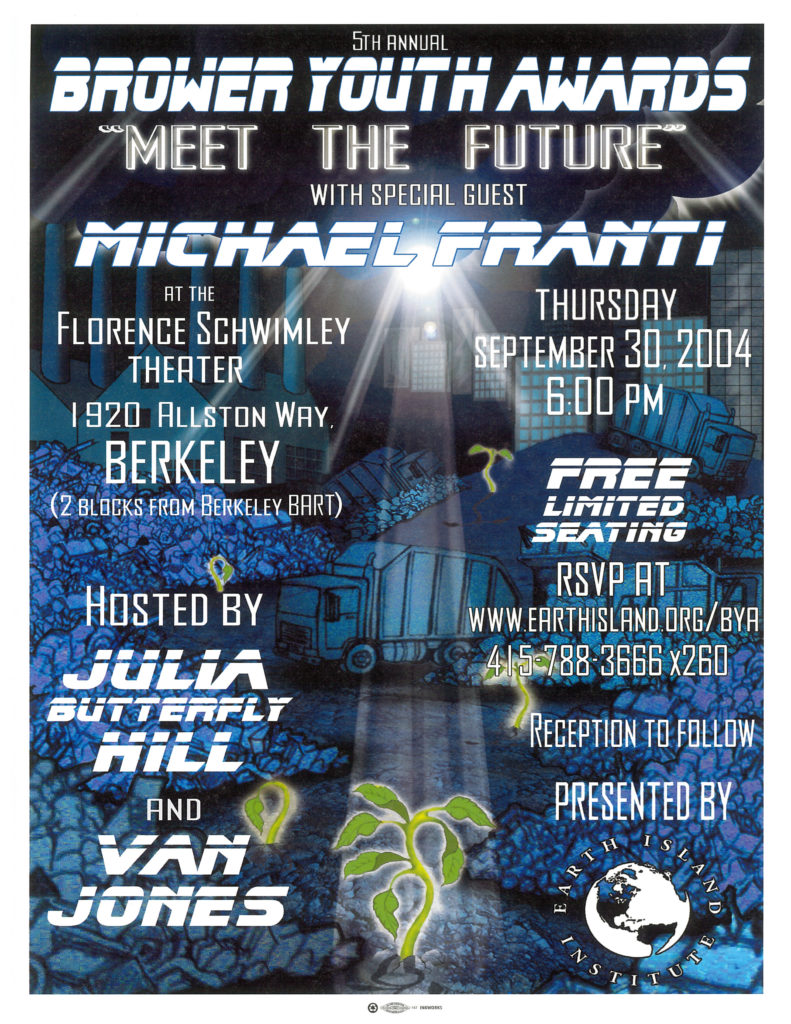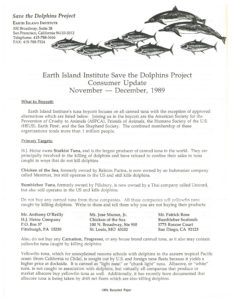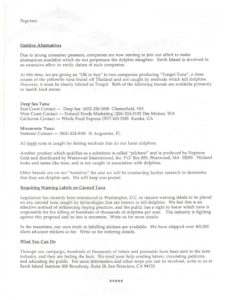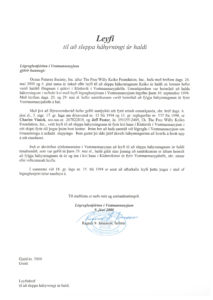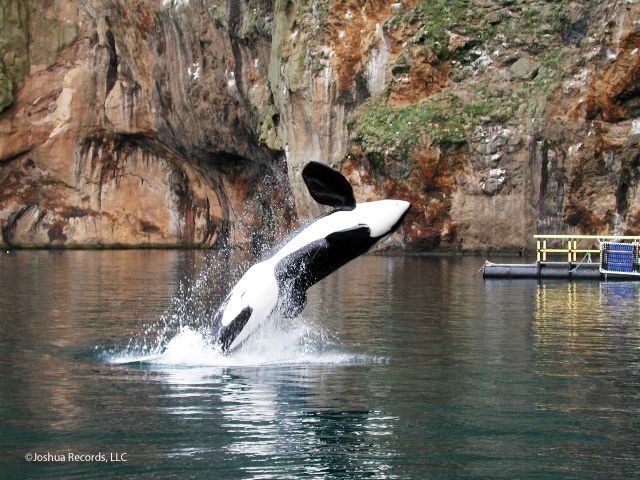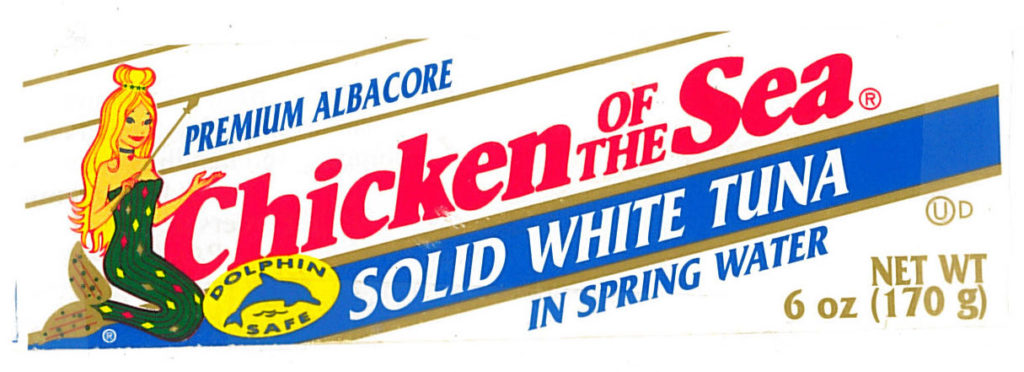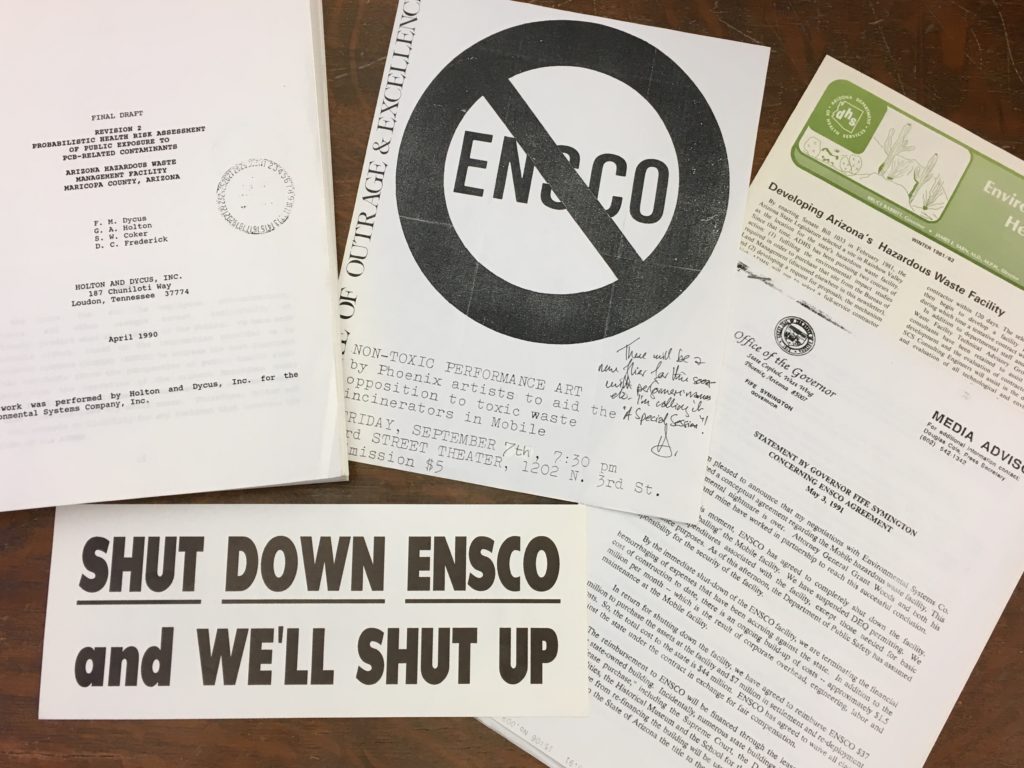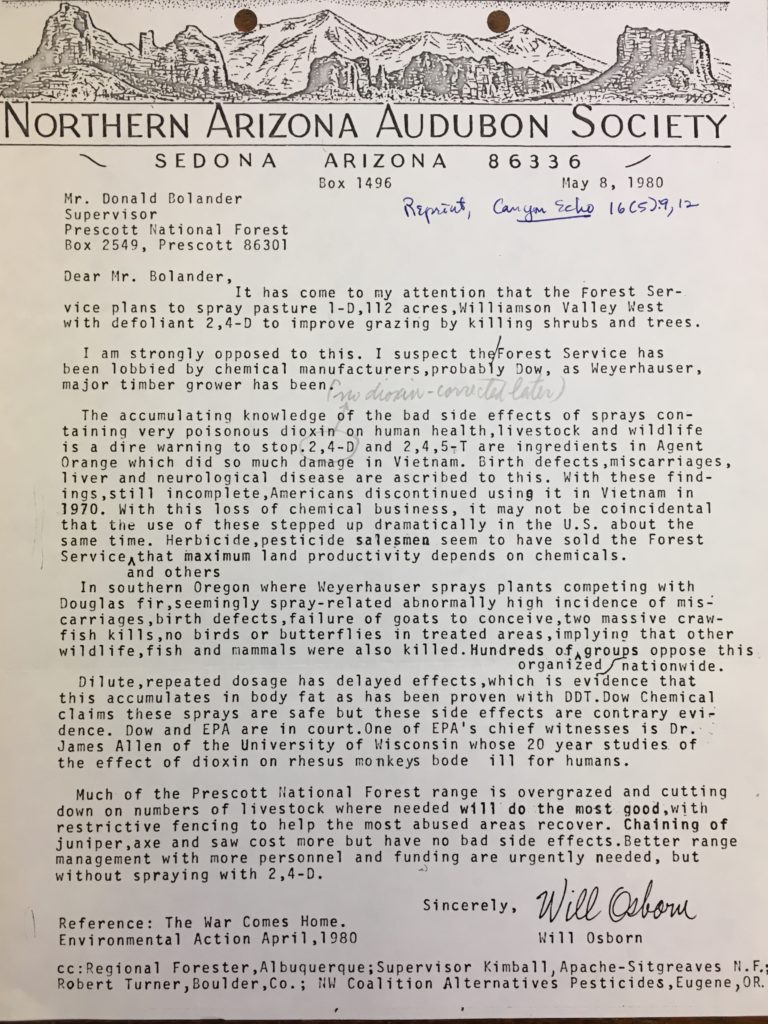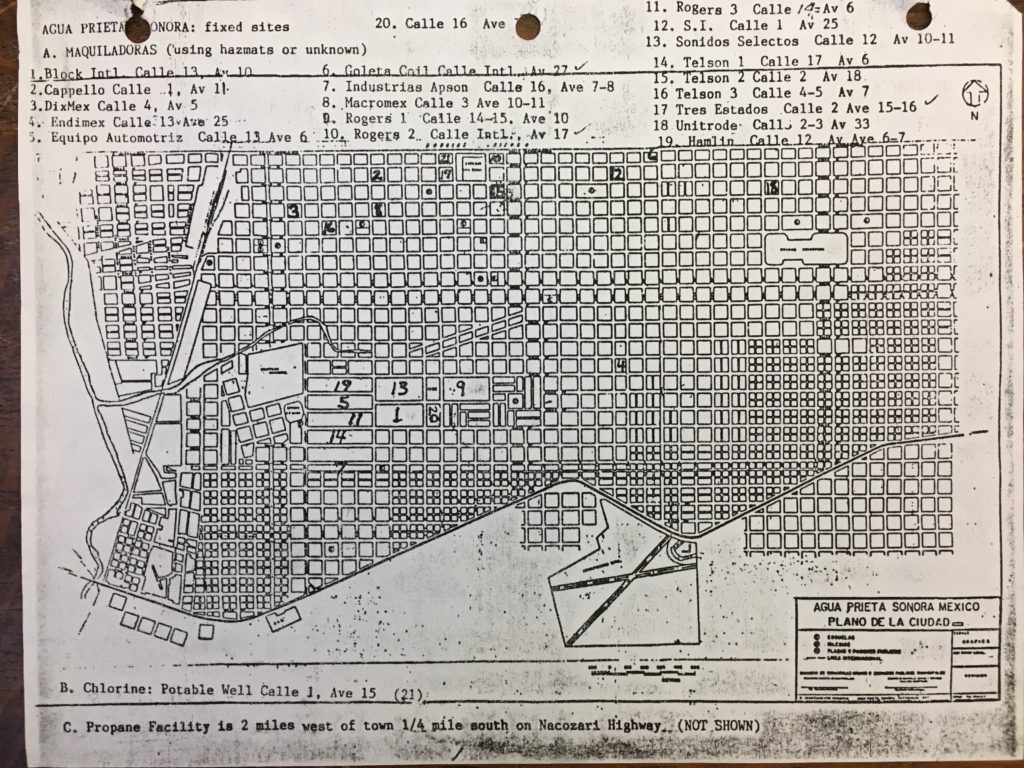Tag: Bancroft
The Bancroft Library’s San Francisco Examiner photograph archive
As part of the UC Berkeley University Library’s ongoing commitment to make all our collections easier to use, reuse, and publish from, we are excited to announce that we have just eliminated licensing hurdles for use of over 5 million photographs taken by San Francisco Examiner staff photographers in our Fang family San Francisco examiner photograph archive negative files, BANC PIC 2006.029–NEG, and Fang family San Francisco examiner photograph archive photographic print files, BANC PIC 2006.029–PIC.
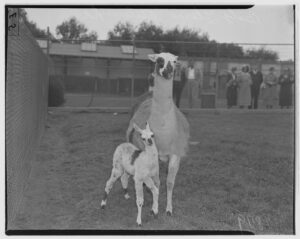
Every photograph within these photographic print and negative collections that were taken by an SF Examiner staff photographer are now licensed under a Creative Commons Attribution 4.0 license (CC BY 4.0). This means that anyone around the world can incorporate these photos into papers, projects, and productions—even commercial ones—without ever getting further permission or another license from us.
What is the San Francisco Examiner collection?
The SF Examiner has been published since 1863, and continues to be one of The City’s daily newspapers. It was acquired by George Hearst in 1880 and given to his son, William Randolph Hearst, in 1887. It was the founding cornerstone of the Hearst media empire, and remained part of the Hearst Corporation’s holdings until it was sold, in 2000, to the Fang family of San Francisco. In 2006 the Examiner’s photo morgue, totaling over 5 million individual images, was donated to The Bancroft Library by the Fang family’s successors, the SF Newspaper Company, LLC.
Along with the gift of negatives and photographic prints, the copyright to all photographs taken by SF Examiner staff photographers was transferred to the UC Regents, to be managed by UC Berkeley Library. However, the copyright to works (mainly in the form of photographic prints) that appear in the collection that were not created by SF Examiner staff was not part of the copyright transfer to the University. Copyright to any works not taken by SF Examiner staff is presumed to rest with the originating agency or photographer. The Library maintains a list of known SF Examiner staff photographers and can assist in making identification of particular photographs until the metadata has been updated.
What has changed about the collection?
Although people did not previously need the UC Regents’ permission (sometimes called a “license”) to make fair uses of our SF Examiner photograph archive, because of the progressive permissions policy we created, prior to January 2024 people did need a license to reuse these works if their intended use exceeded fair use. As a result, hundreds of book publishers, journals, and film-makers sought licenses from the Library each year to publish our Examiner photos.
The UC Berkeley Library recognized this as an unnecessary barrier for research and scholarship, and has now exercised its authority on behalf of the UC Regents to freely license the SF Examiner photographs in our collection that were taken by staff photographers under a Creative Commons Attribution 4.0 license (CC BY 4.0). This license is designed for maximum dissemination and use of the materials.
How to use SF Examiner collection photographs
Now that the photographs by SF Examiner staff photographers have a CC BY license applied to them, no additional permission or license from the UC Regents or anyone else is needed to use these works, even if you are using the work for commercial purposes. No fees will be charged, and no additional paperwork is necessary from us for you to proceed with your use.
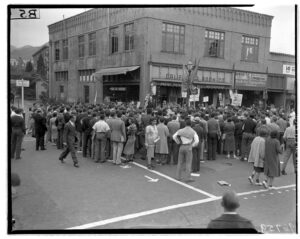
Making your usage even easier is the fact that over 22,000 of these negative strips have been digitized and made available via the Library’s Digital Collections Site, and the finding aid for the prints and negatives have more information about the photographs that have not yet been digitized.
The CC BY license does require attribution to the copyright owner, which in this case is the UC Regents. Researchers are asked to attribute use of reproductions subject to this policy as follows, or in accordance with discipline-specific standards:
Fang family San Francisco Examiner photograph archive, © The Regents of the University of California, The Bancroft Library, University of California, Berkeley. This work is made available under a Creative Commons Attribution 4.0 license.
One final note on usage: While the SF Examiner Collection now carries a CC BY license, this does not mean that other federal or state laws or contractual agreements do not apply to their use and distribution. For instance, there may be sensitive material protected by privacy laws, or intended uses that might fall under state rights of publicity. It is the researcher’s responsibility to assess permissible uses under all other laws and conditions. Please see our Permissions Policy for more information.
Other Library collections with a CC BY license
The Fang family San Francisco Examiner photograph archive joins a number of other collections that the Library has opened under a CC BY license, including the photo morgue of the San Francisco News-Call Bulletin. All of the collections that have had a CC BY license applied can be found on our Easy to Use Collections page.
Happy researching!
OHC Exhibit “Voices for the Environment” Curator Q&A
The Oral History Center is excited to announce the opening of Voices for the Environment: A Century of Bay Area Activism, a Bancroft Library Gallery exhibition that was curated by Todd Holmes, Roger Eardley-Pryor, and Paul Burnett. Voices for the Environment traces the evolution of environmentalism in the San Francisco Bay Area across the twentieth century. In three sections, it highlights how Bay Area activists have long been on the front lines of environmental change—from efforts to preserve natural spaces in the wake of the 1906 San Francisco earthquake and fire, to the midcentury fight for state regulations to protect San Francisco Bay shoreline, to more recent demands for environmental justice to address the disproportionate burden of pollution that sickened communities of color around the Bay.
We sat down with Eardley-Pryor and Holmes to ask them about their experience curating the exhibit, bringing the OHC’s interviews to life in The Bancroft Library’s gallery, and what they learned along the way.
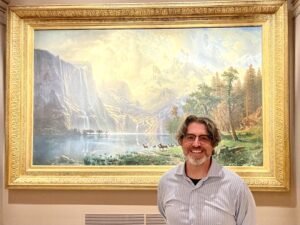
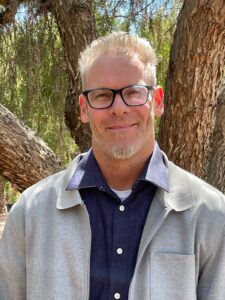
Q: When you were originally thinking about this exhibit, which spans a century of Bay Area environmental activism, what topics, themes, or events were important for you to include?
TH: As historians, both Roger and I approached the exhibit through the lens of change over time, essentially asking the question, “How did what we’ve come to recognize as environmentalism evolve and change in the Bay Area over the twentieth century?” Combining our knowledge of both the oral history collection – which was to stand at the heart of the exhibit – and the environmental history of California, we selected the three stories we wanted to highlight fairly quickly.
First, we wanted to tell the story of Hetch Hetchy, the valley in Yosemite National Park that was dammed for San Francisco’s water system. This is a seminal event used in history classes across the nation to highlight the battle between two schools of environmentalism, preservationists like the Sierra Club’s John Muir, and conservationists like Gifford Pinchot of the U.S. Forest Service in the first part of the twentieth century. For the exhibit, we sought to use the Hetch Hetchy story to introduce visitors to preservation as the first form of environmentalism that took root in the Bay Area.
Second, we wanted to tell the story of Save The Bay, the movement initiated by three women from Berkeley to halt bay fill. Ultimately, that movement led to the creation of the San Francisco Bay Conservation and Development Commission (BCDC), a state government agency to regulate development on the bay. Here we wanted to highlight how environmental concerns became embedded within the fold of government by the mid-century. BCDC stands as the first environmental agency in the United States, providing a precedent for other regulatory agencies on the state and federal level in the years that followed, such as the California Coastal Commission. Moreover, BCDC also operated within a framework that sought to balance environmental protection with economic development.
Third, we wanted to tell the story of environmental justice, a movement in the last part of the twentieth century that sought to put the health of people – particularly communities of color – within the environmental agenda. While environmental justice is fairly common today in discussions of environmental policy, the story of how it developed is not well known, and the Bay Area was one of the central places in the nation from which the movement took root.
REP: Todd and I worked to ensure that, in this exhibit, environmental activists could speak for themselves, and that visitors to the exhibit could actually hear the voices of activists recorded in their oral history interviews. The Audio Spotlight technology that allow people to hear interview clips in the gallery, the three videos Todd created with rare film footage and photographs, and the three podcast episodes we made with Sasha Khokha of KQED all make this exhibit something special that has never been done before in The Bancroft Library Gallery. For me, the people-power of communities of color demanding environmental justice, and the longtime leadership of women working for environmental protection were really important themes to include. Often, environmental history is told through the actions of men like John Muir, who does deserve credit for his early advocacy to protect nature through its preservation. The legacy of Muir and the ongoing work of the Sierra Club are important, and they remain so today. But Todd and I wanted to tell a deeper and broader history of Bay Area environmentalism, which shows how women and people of color have been central to the expansion and the evolution of environmental action over the course of the 20th century. I hope the stories shared in this exhibit help contextualize and make current environmental issues more meaningful—be it present-day preservation issues in 30 x ’30 campaigns, or conflicts over coastal regulations amid sea-level rise, or ongoing challenges to empower people of color in mainstream environmental movements.
Q: Did the themes you wanted to highlight change during the course of your research?
REP: We worked hard for over a year to bring this exhibit to life and to my memory, we agreed fairly early on about the three main narratives featured in the exhibit—the preservation of nature, reconciling environment and development, and environmental justice for communities of color. Over the course of our research, we changed the details of which particular oral history segment we might include here or there, or which image or document would best compliment the oral histories featured in each section of the exhibit. But as I recall, the exhibit’s main story arc remained steady from early in our curation process.
TH: Surprisingly, there was no change in the main topics / stories we wanted to highlight in the three sections of the exhibit. What our research did do was help expand on the themes within each to add more depth and nuance around community activism. For instance, in the first section we not only focused on the story of Hetch Hetchy, but connected it to activism around Save the Redwoods, which in turn highlighted the vital – yet often overlooked – role of women in the early preservation movement. Men like John Muir may have become the figureheads of environmentalism, and voted for such policies in government, but it was women who provided the grassroots momentum that put environmental concerns on the table. The same could be said for the third section on environmental justice. Our research uncovered a lot of different groups and experiences in the Bay Area grappling with environmental racism, from toxic sites in Richmond and what became known as the Silicon Valley, to debates with white environmental groups about even using the term “racism.” So in all, our research gave us a number of themes to spotlight and weave together throughout the exhibit
Q: The exhibit begins with the 1906 earthquake. Why did you decide to start there?
TH: This is another example of how research expanded the themes and stories of the three main topics we sought to feature in the exhibit. We wanted to highlight the story of Hetch Hetchy in the first section. Our research of the Hetch Hetchy battle forced us to upstream to the root cause – the 1906 earthquake and fire that destroyed 80 percent of San Francisco. At the time, San Francisco stood as the largest and richest city west of Chicago. In the wake of the disaster, the rebuilding effort posed a tremendous threat to the natural resources of the state. Ancient redwood forests throughout the Bay Area and along California’s north and central coast were targeted for timber, just as the Hetch Hetchy Valley was eyed for water and hydro-electric power. Thus, these rebuilding efforts proved the impetus of the early activism to preserve California’s environment.
REP: The drowning of Hetch Hetchy Valley—despite it being located within Yosemite National Park—is such a powerful and classic story in environmental history, and it occurred because the 1906 earthquake and fire destroyed San Francisco. Amazingly, Todd found several oral histories in our collection with survivors of the earthquake and fire who recall their experiences of it when they were children. In The Bancroft Library, Todd also found historic film footage, recently digitized, that shows San Francisco still aflame just after the earthquake. Putting those oral histories together with this footage make for a captivating start to the exhibit.
But what I didn’t realize until working on the exhibit was how the preservation of redwoods was also connected to how the earthquake and fire destroyed San Francisco. After the fire, lumber companies promoted California’s fire-resistant coastal redwoods as a means to rebuild the devastated city. In turn, environmentalists redoubled their efforts to preserve special groves of those ancient redwood trees. It suddenly made sense to me how Muir Woods National Monument was established in Marin County just a few years after the 1906 earthquake. Additionally, we wanted our exhibit on Bay Area environmentalism to highlight the Sierra Club, which was founded in San Francisco in 1892 and has since become one of the most influential environmental organizations in the nation. The Oral History Center has conducted oral histories with Sierra Club leaders since the early 1970s, and several activists, like William Colby, Ansel Adams, and David Brower, discussed in their oral histories how the fate of Hetch Hetchy continues to inform ongoing preservation efforts. So, in many ways, the 1906 San Francisco earthquake and fire helped ignite the spirit of preservation that still informs environmental activism, both in the Bay Area and across much of North America.
Q: What role does oral history play in the exhibit?
REP: Oral history is the beating heart that gives life to this exhibit! We scoured several scores of Oral History Center transcripts for captivating stories about Bay Area environmental activism. David Dunham helped us obtain digitized versions of those oral history recordings. We then used The Bancroft’s traditional paper, photograph, and film collections to complement the oral history narratives that we featured in the exhibit. Christine Hult-Lewis and Lorna Kirwan helped us explore several of those archival collections, and Theresa Salazar pointed us to the excellent Urban Habitat Program Records, 1970-2001, which are displayed in our exhibit. Ultimately, the exhibit offers a multi-sensory experience where visitors can engage audio recordings, film footage, oil paintings, photographs, pamphlets, posters, descriptive text, and they can even hold the hardbound oral history transcripts featured in the exhibit. But certainly, oral history is the centerpiece of the exhibit.
TH: In short, everything! This is the first exhibit curated by the Oral History Center, and the first in-depth effort to showcase both the oral history and other archival collections of The Bancroft Library. Each section features oral histories about the main topic in three ways. Edited oral history segments are played in each section through an Audio Spotlight speaker, and accompanied with a video that shows captions as well as related photographs and archival footage. The oral histories are also available through a three-episode podcast, narrated by Sasha Khokha from KQED San Francisco. The podcast episodes, available online and in the gallery by scanning a QR Code, offer a deeper dive into the stories of each section. Lastly, we used oral histories quotes in the labels of the exhibit material to add further detail and context.
Q: The 1960s and ’70s were two very productive decades in terms of environmental activism. Did the oral histories that you encountered from the OHC’s collection make you think differently about this period, or illuminate something new?
TH: In my view, the oral histories we used in the exhibit helped place the activism of the 1960s and 1970s in better context. For instance, we often think of the “environmental movement” as arising around the late 1960s / early 1970s. Yet, this view completely overlooks the activism of men and women around preservation in the first couple decades of the twentieth century. It also overlooks the vital work of Sierra Club executive director David Brower, whose activism throughout the 1950s and 1960s staved off numerous developments and led to the establishment of ten new national parks. In many respects, I think the oral histories featured in this exhibit pushed me to think about a “long environmental movement” that gained traction in the halls of government during the 1960s and 1970s. I think the exhibit also highlights how the Civil Rights Movement and environmental movement came to intertwine by the end of the decade to form environmental justice, which was an area I felt fortunate to learn more about through this project.
REP: Actually, rather than the 1960s and 1970s, the oral histories we included in the exhibit helped me realize the importance of the 1980s and 90s to the expansion and evolution of environmentalism. Without a doubt, activity surrounding Earth Day in 1970 was a key inflection point in environmental history, inspiring new environmental laws and a new generation of environmental activists. But the oral histories in our exhibit tell how Bay Area activists laid the early groundwork at least since the early 20th century for later environmental regulations, and how activists in the final decades of the 20th century worked to include all people in environmental protections, especially communities of color who suffered the most from industrial pollution.
Q: You put together additional material, like a podcast and class workbook, to accompany the exhibit. How do you hope people will use these materials?
TH: For the past couple years, the Oral History Center has been working on ways to get our collection into the K-12 education space. We developed additional materials, such as the class workbook and podcast, to serve as educational resources for K-12 classrooms, as well as undergraduate courses.
REP: The podcasts and educational workbook can be used anywhere—while visiting and experiencing the exhibit in person, or at home or in classrooms. We hope people use those additional materials long after the exhibit closes in November 2024!
Q: What do you hope that people take away from the exhibit?
REP: I hope exhibit visitors sense the importance, power, and potential of oral history. I hope they see how the Oral History Center’s work to record the lived experiences and reflections of people through oral history creates invaluable records that helps us better understand where we’ve come from and helps us make sense of our experiences today. I also hope visitors realize the importance of Bay Area activists in shaping the evolution of environmentalism over time. And I hope visitors hear how the actions of Bay Area people in the past, as told in their own words, helped define our experiences in the Bay Area today. Given today’s grave threats to our environment and to our democracy, I hope visitors appreciate how environmental activism remains an ongoing process that is shaped and renewed by average people like them who engage in civic activism. I also hope the oral histories featured in this exhibit—and the many, many more that are preserved in the Oral History Center collection—help inspire people to shape and renew environmentalism today and in the future.
TH: I hope visitors come away from the exhibit with a better understanding of how environmentalism evolved and changed over the century, and that it has a long history in the Bay Area. Moreover, I hope the oral histories featured in the exhibit highlight the change brought on by everyday people. It was the activism of men and women that led to protected redwood forests and the creation of state and national parks. It was the unwavering dedication of three women from Berkeley that stopped fill projects in San Francisco Bay and led to the nation’s first government-run environmental agency. And it was the collective action of communities of color that put justice within the environmental agenda, and on the dockets of policymakers. Ultimately, I hope visitors, young and old, walk away with the idea that change comes about through everyday people.

Title IX in Practice
How Title IX Affected Women’s Athletics at UC Berkeley and Beyond
By William Cooke
Title IX, a federal civil rights law passed in 1972 that amended the 1964 Civil Rights Act, prohibits discrimination based on sex at any educational institution that receives federal funding. While it pertains broadly to all forms of sex-based discrimination, the law arguably precipitated the most change in the arena of intercollegiate athletics. In any case, the passage of Title IX half of a century ago represents perhaps the single most significant event in the history of intercollegiate athletics in the United States, and was a major victory in the realm of civil rights for women.
The UC Berkeley Oral History Center houses a rich collection of interviews between oral historians and a diverse set of individuals that touch upon Title IX. In these interviews, influential figures across many different fields including intercollegiate sports, academia, and politics provide their insight into Title IX and its implementation over the course of the past fifty years.
“Title IX was fantastic for women in politics. It has created a generation of risk takers, in the best of ways.” —Mary Hughes, political consultant
Here are just a handful of voices that mention the transformative 1972 law across a few of the Oral History Center’s many collections.
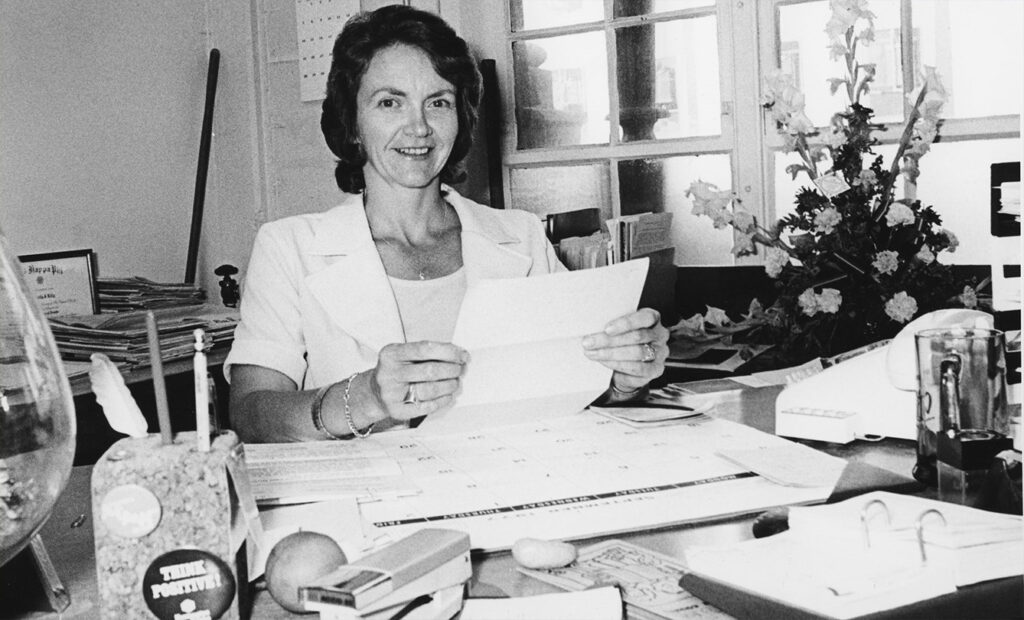
In her oral history, Mary Hughes, a long-time Democratic political consultant who once served as the executive director of the California Democratic Party, recognizes the underappreciated role of Title IX and gender inclusion in sports in preparing women for positions of leadership in politics.
I attribute a lot of their success to Title IX, and here’s why: Title IX was fantastic for women in politics, both those who have supported and strategized to get women into office, and the women who have run. There is a difference between the women who grew up playing sports from a very young age and the women who did not… Their ability to be competitive without an irrational fear of failure is one of the most freeing things I’ve ever seen. I love these young, competitive women, and I hope we hold on to this, because it has created a generation of risk takers, in the best of ways, in the best of ways.
As a result of Title IX’s passage at the start of the decade, Luella Lilly became the first director of Women’s Athletics at Cal in 1976. The promise of equal opportunity for women in collegiate sports did not — and still does not — mean that men’s and women’s sports were resourced equally. One of Lilly’s priorities as director was to establish scholarships for female athletes for the very first time.
And so what I did was—they gave me—I think it’s $6,740 dollars, which was— tuition and fees were $670, I think they were, something like that. Anyway, it gave me ten tuition and fees at that point in time. So I gave them to each of the sports that could give scholarships, and had the coach divide it so that whatever way they wanted to. If they wanted to give somebody a full ride that was up to them, but if they wanted to split it among all— they could do anything they wanted to in their particular sport. But I just wanted to be able to mark the check that said we had them.
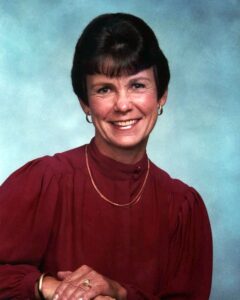
Joan Parker, a former Cal women’s basketball, softball, volleyball and tennis coach as well as assistant and associate athletic director in the Women’s Athletic Department for 13 years, praises Lilly for championing women’s sports when it was underfunded and underappreciated in the decades following 1972.
Lue came in, it was just—I was totally impressed with how she made things happen with so little money. It was just ridiculous when you compared our budgets to others… But Title IX definitely— and I think a lot of people didn’t understand it. A lot of outside— like our boosters and things like that, weren’t as aware of it. I think it was more of an internal pressure that at some point you’re going to be held accountable, and so you’d better start something in motion.
But while revolutionary and long overdue, Title IX also had some adverse, unintended consequences that still trouble university athletic programs.
Roberta Park was a supervisor of Physical Education at UC Berkeley until she stepped down after the passage of Title IX. She later served as the chair of the Department of Physical Education between 1982 and 1992. Park was a tireless champion of physical education programs and, in her oral history, makes it known that Title IX indirectly brought about a whole slew of repercussions for recreational sports programs that once benefited the entire student body. For one thing, elite athletes were prioritized over women’s widespread inclusion in sports.
I believed, and still believe, that colleges and universities (and high schools as well) should provide extracurricular sports programs for all interested women and girls, not just for the small number of the best athletes. Unfortunately, what evolved was an emphasis on the latter and an approach that gives the athletic program for a small number of the women athletes precedence over everything else… “We want to focus only on the women’s “varsity” basketball team, etc.” Well, if you put all of your efforts into a small number of the best athletes and you forget about all the others, what have you done? And that’s exactly what has happened. That’s exactly what has happened.
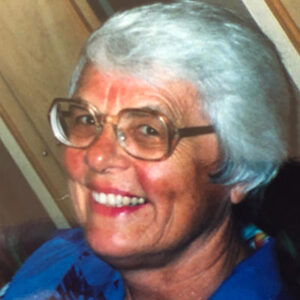
Another repercussion of Title IX was the merging of Physical Education and Intercollegiate Athletics departments at major universities across the country. This meant that sports programs for women were subsumed into intercollegiate athletics programs, sometimes causing women to lose higher-level administrative positions to men. After the passage of Title IX, Park pushed for the creation of a separate department of intercollegiate sports for women at UC Berkeley, which she argued was crucial to protecting female representation in intercollegiate athletics administration.
The emerging intercollegiate athletic sports for women, which used to be under the direction of Women’s Athletic Association or Women’s Recreation Association (which were directed by females, usually physical educators) were now all being moved over into Intercollegiate Athletics. With very, very few exceptions (in fact, I can think of none except at women’s colleges) all the Directors positions were taken over by men: And one of the things that I said was, “Well, okay, men have been doing this longer, and fair enough, but if Title IX is supposed to be about equity, what about the equity of women as the directors?”… So they finally decided, and I— I guess pushed is the right word, to the extent that I thought was appropriate, in the direction of a separate unit for women.
Another issue that arose was in the way that equal opportunity was interpreted. Charles Young, the Chancellor of UCLA between 1968 and 1997, witnessed firsthand the evolution of Title IX’s implementation at a major Division I university from before its conception up until the late 1990s. Young found the policy of creating an equal number of men’s and women’s programs to be misguided and at times counterproductive.
The principles of Title IX are fantastic but I think the major problem was that they took equivalence or took opportunity. Instead of opportunity they looked at the balance. And so you create a women’s sport to get in balance and there isn’t anybody who wants to play it. So then you have to go out and recruit people to come play it. Well, the principle should have been, are you providing as much opportunity for the women students as you are for the men. But it’s driven up the number of sports. It’s caused good sports to be eliminated at UCLA.
Former UC Berkeley Athletic Director John Kasser, who served as AD between 1993 and 2000, claims in his interview that Title IX was unfair to the supporters of Cal men’s sports who had to subsidize women’s sports in order to continue funding men’s sports at a competitive rate.
But see, that’s the thing when we—I don’t blame—Title IX was absolutely right and has been wonderful for women’s athletics, but nobody ever came with a financial plan… And so they expected Men’s Athletics to raise the funds to support Women’s Athletics. And so when you talked about it—you couldn’t say, “Well, that’s not fair.” But it wasn’t fair. It wasn’t fair.
One could argue that Title IX’s pitfalls speak more to the systemic issues that have prevented female student athletes from enjoying the same access to resources as men and not, as some might argue, to the failure of the law itself to protect “fairness.” The historical disadvantages of women in college sports made growing pains inevitable and even healthy for a field that has been dominated by men from the outset.
Now, fifty years after Title IX’s inception, these interviews help us recognize not only that progress is never perfect or steady, but also just how much progress has been made in the way of gender equality in intercollegiate sports thanks to the ongoing struggle of marginalized groups for the recognition of their civil rights.
Find these and all our oral histories from the search feature on our home page. You can search by name, keyword, and several other criteria.
William Cooke is a fourth-year undergraduate student majoring in Political Science and minoring in History. In addition to working as a student editor for the Oral History Center, he is a reporter in the Sports department at UC Berkeley’s independent student newspaper, The Daily Californian.
About Title IX
Title IX of the Education Amendments to the Civil Rights Act of 1964 was signed into law on June 23, 1972, by President Richard M. Nixon: “No person in the United States shall, on the basis of sex, be excluded from participation in, be denied the benefits of, or be subjected to discrimination under any education program or activity receiving Federal financial assistance.”
Related Resources from The Bancroft Library
The Bancroft Library has hundreds of materials related to athletics in California and beyond. Here are just a few.
See the Oral History Center’s (OHC) project, “Management of Intercollegiate Athletics at UC Berkeley: 1960–2014” which includes more than forty interviews with chancellors, athletic directors, faculty members, donors, and others involved in athletics at Berkeley. See also OHC’s “Education and University of California — Individual Interviews” featuring more than 150 faculty, senior administrators, and staff.
University of California, Berkeley. Department of Women’s Intercollegiate Athletics records, 1976-1993. UC Archives (NRLF) CU-566
A celebration of excellence : 25 years of Cal women’s athletics. UC Archives Folio 308m.p415.c.2001
Title IX self study, University of California, Berkeley, approximately 1977. UC Archives (NRLF) CU-509
About the Oral History Center
The Oral History Center of The Bancroft Library has interviews on just about every topic imaginable. You can find the interviews mentioned here and all our oral histories from the search feature on our home page. Search by name, keyword, and several other criteria. We preserve voices of people from all walks of life, with varying political perspectives, national origins, and ethnic backgrounds. We are committed to open access and our oral histories and interpretive materials are available online at no cost to scholars and the public.
Sign up for our monthly newsletter featuring think pieces, new releases, podcasts, Q&As, and everything oral history. Access the most recent articles from our home page.
“I take this obligation freely:” Recalling UC Berkeley’s loyalty oath controversy
By Shannon White, with research by Adam Hagen
Loyalty oaths have long been in use in the United States as a means of promoting social unity in the face of war, perceived security threats, or fears about waning political support. Even now, loyalty oaths are common as a condition of employment for many state workers. In fact, all employees of the state of California, including the faculty and staff members of the University of California, currently sign an oath of loyalty upon hire, stating that they will defend the constitution against all enemies foreign and domestic, and that they take this obligation freely.
In particular, the idea of a governmental loyalty oath rose to prominence in the 1940s, when tensions between the US and the Soviet Union and growing fears about a communist infiltration of the government prompted President Harry S. Truman to establish a loyalty program for federal employees. In March 1947, Truman signed Executive Order 9835, which ensured that employees of the US government could be subject to investigation for potential involvement in “subversive” organizations.
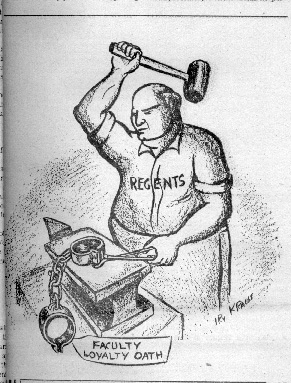 In the wake of President Truman’s Executive Order, the California state legislature began to introduce its own policies in opposition to potential communist activity in the government. These proposals would have given the state authority over the University of California in matters of loyalty, prompting the University of California administration to act in response to prevent infringement on the institution’s autonomy. Furthermore, the university was at this time also facing financial difficulties, with the state threatening to withhold funding for the university budget due to worries about subversive activity within its community. As a result of these mounting pressures, University President Robert G. Sproul proposed his own loyalty oath for university faculty and employees on March 25, 1949. The text of the oath approved by the Regents on June 24 was as follows:
In the wake of President Truman’s Executive Order, the California state legislature began to introduce its own policies in opposition to potential communist activity in the government. These proposals would have given the state authority over the University of California in matters of loyalty, prompting the University of California administration to act in response to prevent infringement on the institution’s autonomy. Furthermore, the university was at this time also facing financial difficulties, with the state threatening to withhold funding for the university budget due to worries about subversive activity within its community. As a result of these mounting pressures, University President Robert G. Sproul proposed his own loyalty oath for university faculty and employees on March 25, 1949. The text of the oath approved by the Regents on June 24 was as follows:
I do solemnly swear (or affirm) that I will support the Constitution of the United States and the Constitution of the State of California, and that I will faithfully discharge the duties of my office according to the best of my ability; that I do not believe in, and I am not a member of, nor do I support any party or organization that believes in, advocates, or teaches the overthrow of the United States Government, by force or by any illegal or unconstitutional means, that I am not a member of the Communist Party or under any oath or a party to any agreement or under any commitment that is in conflict with my obligations under this oath.
Almost immediately, the introduction of the loyalty oath garnered controversy. Many faculty members and staff refused to sign the oath, resulting in a rash of firings and resignations and a tense stand-off between the Board of Regents and university faculty, staff, and students. The oath was later declared unconstitutional in 1951 in Tolman v. Underhill, and many of the thirty-one dismissed faculty returned to Berkeley.
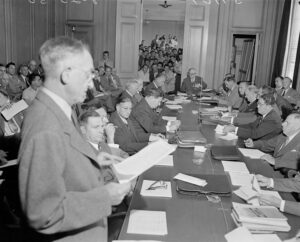
1950 August 25, BANC PIC 1959.010. San Francisco News-Call Bulletin Newspaper Photograph Archive, The Bancroft Library, UC Berkeley.
The UC Berkeley Oral History Center has several interviews related to the loyalty oath controversy, many from UC faculty members who witnessed or were themselves involved in the response to the oath’s introduction.
Among these is a collection of interviews specifically concerning the loyalty oath, which features oral histories from Howard Bern, a UC Berkeley faculty member who signed the oath last-minute; Ralph Giesey, a graduate student of non-signer Ernst Kantorowicz; and Deborah Tolman Whitney and Mary Tolman Kent, the children of Berkeley professor Edward Tolman, a key leader of the faculty opposition to the oath.
These interviews reveal the fraught relationship between university faculty and administration after the instatement of the loyalty oath, with rampant fears about academic freedom and discrimination against potentially “subversive” faculty members. Here, Howard Bern shares his distaste of the oath and his moral grounds for originally refusing to sign:
I felt that it was discriminatory, that it was singling out university professors as if they were especially potentially evil. So on a civil libertarian ground I objected to this. And the second ground was my own feeling. I had been in the army for almost four years. What more manifestation of loyalty did they really want?
In the oral history of Charles Muscatine, who returned to UC Berkeley in 1953 after being fired for his refusal to sign the oath as an assistant professor, Muscatine recalls the most poignant moment for him of the entire controversy:
At a certain moment, [Malcolm Davisson, a faculty policy chair] contacted me. He said, “We have lost the moral right to decide.”
Other interviews offer more insight into the experience of witnessing the loyalty oath controversy firsthand. For instance, Ralph Giesey discusses the hearings he and his fellow non-signing teaching assistants had to undergo as a condition of their opposition to the oath. Howard Schachman, an assistant professor at UC Berkeley at the time of the oath, describes the moral compromise he underwent when he signed something he considered philosophically “abhorrent.”
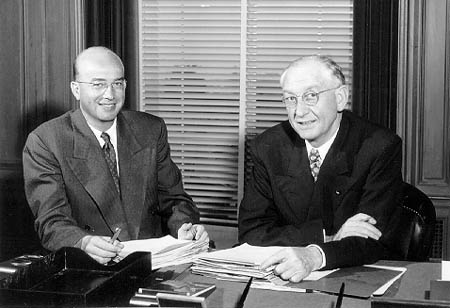
The loyalty oath controversy at UC Berkeley is often viewed through the perspective of academic freedom amid anticommunist fervor, but an oral history of Clark Kerr, UC Berkeley faculty member at the time — and later campus chancellor and university president — provides another perspective. Kerr observed that the controversy must be viewed in light of the internal divisions in the Board of Regents that escalated in the 1940s over debates about centralization versus campus autonomy. According to Kerr, Regent John Francis Neylan and the southern regents tended to favor campus autonomy, while University President Robert G. Sproul and most of the northern regents called for a centralized system. This issue resolved itself with the creation of the post of chancellor for each UC campus, and Kerr himself was later appointed to the position at UC Berkeley in 1952.
According to Kerr:
As I understand it, Neylan really just seized on the oath controversy as a way of whipping Sproul around because he was unhappy with him on other grounds. . . . [Sproul] looked to me like a man who was just immobilized by the controversy. It was out of this, according to what I observed, that [Earl] Warren then came to take a position of leadership, which he had not taken in the regents before. Normally governors don’t. But the controversy was tearing the university apart. The president was immobilized. Warren stepped in, then, essentially against the oath, or at least against the firing of the non-signers, and took leadership of the more liberal elements of the board.
Howard Bern also recognizes Robert Sproul’s role in mishandling the loyalty oath controversy, stating, “Just as, although he would not admit it, the Free Speech Movement really broke Clark Kerr, I think the loyalty oath situation just destroyed Robert Gordon Sproul and his influence. I don’t think he was a bad man, a bad leader, but I think he made a very fatal error.”
All in all, these oral histories concerning the UC loyalty oath controversy are a great resource for understanding the climate at the University of California in the 1940s and ’50s. They offer a wealth of insight concerning the faculty experience at UC Berkeley, and since many of the interviewees went on to become involved with the Free Speech Movement and other political causes, there is a particular focus in these oral histories on the growth of social movements at the university. For more information about the loyalty oath controversy, check out the Oral History Center’s collection of interviews concerning the oath and other related resources from The Bancroft Library.
Shannon White is currently a third-year student at UC Berkeley studying Ancient Greek and Latin. They are an undergraduate research apprentice in the Nemea Center under Professor Kim Shelton and a member of the editing staff for the Berkeley Undergraduate Journal of Classics. Shannon works as a student editor for the Oral History Center.
Adam Hagen is currently a third-year history student with a concentration in modern European history. Adam works as a student editor for the Oral History Center. He is also a member of the editing staff of Clio’s Scroll, the Berkeley Undergraduate History Journal.
Related Resources from the OHC and The Bancroft Library
Oral Histories Cited
Clark Kerr, University of California Crises: Loyalty Oath and the Free Speech Movement.
The Loyalty Oath at the University of California, 1949–1952. Interviews with Howard Bern, Ralph Giesey, Mary Tolman Kent, Deborah Tolman Whitney.
Howard Schachman: UC Berkeley Professor of Molecular Biology: On the Loyalty Oath Controversy, The Free Speech Movement, and Freedom in Scientific Research.
Charles Muscatine: The Loyalty Oath, The Free Speech Movement, and Education Reforms at the University of California, Berkeley.
Related Oral History Projects
The SLATE Oral History Project documents the UC Berkeley campus political organization SLATE — so named because the group backed a slate of candidates who ran on a common platform for ASUC (Associated Students of the University of California) elections from 1958 to 1966. SLATE ignited a passion for politics in the face of looming McCarthyism and what many perceived as the University of California’s encroachment on student rights to free speech. See also, “They Got Woken Up”: SLATE and Women’s Activism at UC Berkeley
The Free Speech Movement Oral History Project documents the movement at UC Berkeley that began in the fall of 1964 from the perspective of the ordinary people who made it possible — and those who opposed it — including students, lawyers, faculty, and staff.
Related Resources from The Bancroft Library
Kantorowicz, Ernst H. The fundamental issue : documents and marginal notes on the University of California loyalty oath. Bancroft F870.E3 K18.
Papers pertaining to California loyalty oaths, 1954. Bancroft BANC MSS C-Z 92.
University of California, Berkeley Accounting Office loyalty oath records, 1949–1964. UC Archives CU-3.11.
About the Oral History Center
The Oral History Center of The Bancroft Library has interviews on just about every topic imaginable. You can find the interviews mentioned here and all our oral histories from the search feature on our home page. Search by name, keyword, and several other criteria. We preserve voices of people from all walks of life, with varying political perspectives, national origins, and ethnic backgrounds. We are committed to open access and our oral histories and interpretive materials are available online at no cost to scholars and the public.
Building distinguished collections one title at a time-2: Lake of Darkness
I extend my heartfelt thanks to the artist and the creator of Lake of Darkness, Karen Fitzgerald and Kohler Foundation for their support in the acquisition of Lake of Darkness – artists book for our Slavic collections that will be housed in Bancroft Library. This acquisition could not have been possible if not for the generosity of the Kohler Foundation who purchased this rather expensive but unique item and gifted it to UC Berkeley Library in July 2020. During COVID-19 mandated work, I also convey special thanks to Bancroft Library’s Steven Black and Amelia Grounds as without their help it would not have been possible to acquire this 20″x14″ portfolio. The project was printed on 300gm Somerset paper. The text was letterpress printed by Leslie Miller of Grenfel press; box created by Claudia Cohen.
According to the NYC based artist Karen Fitzgerald, “Lake of Darkness was created as a response to Czeslaw Milosz’s poetry and what it means to be in the earth, to be embedded within the landscape.” I note that Milosz was the 1980 Nobel Prize winner and taught at UC Berkeley’s Department of Slavic Languages and Literatures.
The images below are provided courtesy of Karen Fitzgerald.
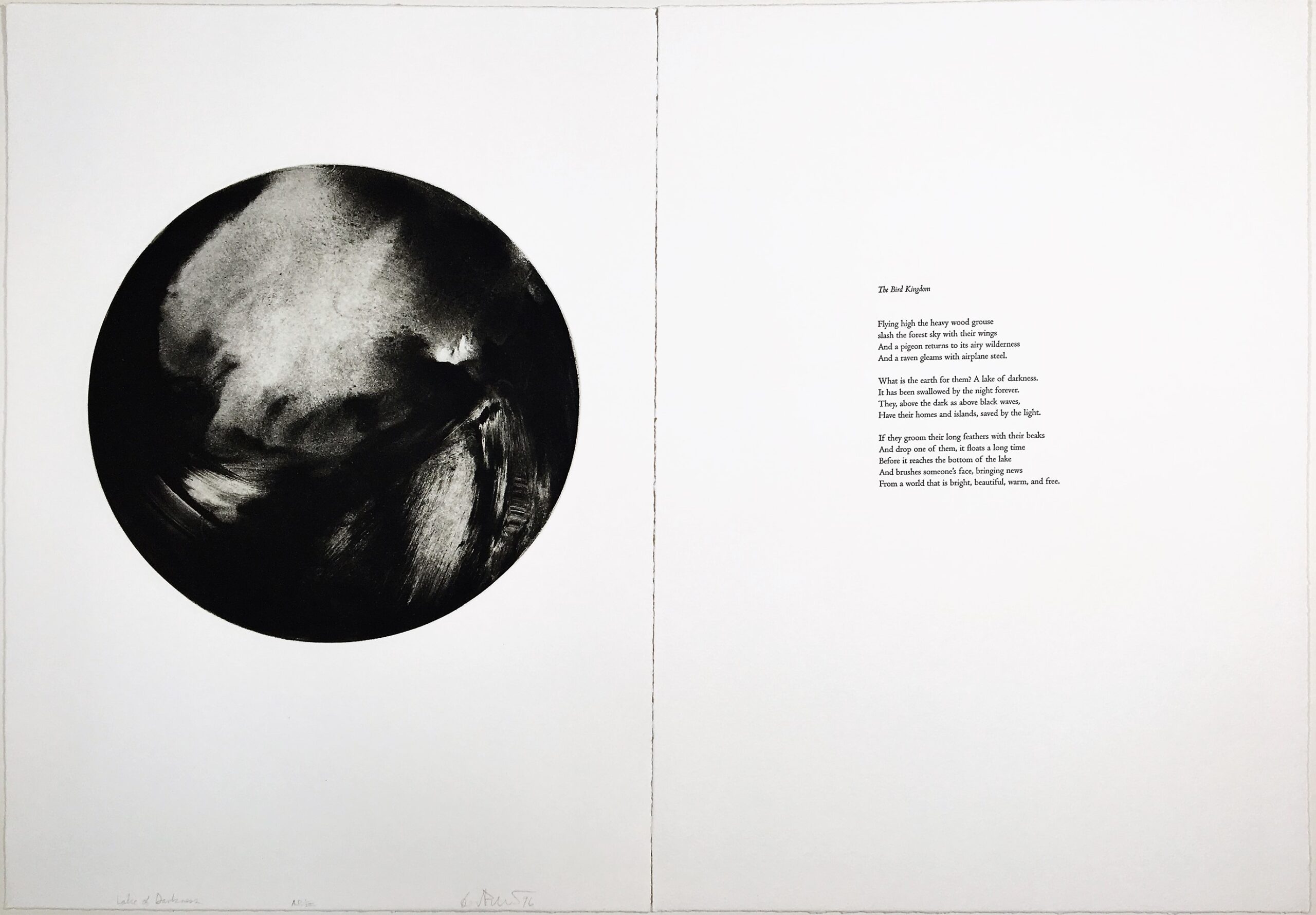

Let There Be Light podcast explores identity at UC Berkeley — through housing, microchips, and the Berkeley food scene
Announcing Season 4 of the Berkeley Remix podcast!
This season of the Berkeley Remix we’re bringing to life stories about our home — UC Berkeley — from our collection of thousands of oral histories. Please join us for our fourth season, Let There Be Light: 150 Years at UC Berkeley, inspired by the University’s motto, Fiat Lux. Our episodes this season explore issues of identity — where we’ve been, who we are now, the powerful impact Berkeley’s identity as a public institution has had on student and academic life, and the intertwined history of campus and community.
The three-episode season explores how housing has been on the front lines of the battle for student welfare throughout the University’s history; how UC Berkeley created a culture of innovation that made game-changing technologies possible; and how political activism on campus was a motivator for the farm-to-table food scene in the city of Berkeley. All episodes include audio from interviews from the Oral History Center of The Bancroft Library.
Episode 1. Sleeping with the Light On: Housing and Community at Berkeley
Written and produced by historian Amanda Tewes, UC Berkeley Oral History Center
“From early housing cooperatives during the Great Depression, to fights for racial and gender parity on campus, housing has been on the front lines of the battle for student welfare throughout the University’s history.”
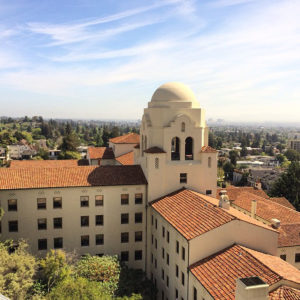
We’ve come to think of communal living as a tradition for students, a rite of passage and a valuable lesson in community building. But for much of its history, UC Berkeley didn’t even have residence halls! In this episode, we explore what home and community has meant to students at Cal, and how accessible spaces have supported social justice movements on and beyond campus.
This episode includes audio from the Oral History Center of The Bancroft Library, including Rev. Allen C. Blaisdell, Jackie Goldberg, Frank Inami, Marguerite Kulp Johnston, Edward V. Roberts, and Dorothy Walker. Voiceover of Ruth Norton Donnelly’s interview by Shanna Farrell. Audio from the “Which Campus?” video courtesy of The Bancroft Library. (Written version of Sleeping with the Light On.)
Episode 2. Berkeley Lightning: A Public University’s Role in the Rise of Silicon Valley
Written and produced by historian Paul Burnett, UC Berkeley Oral History Center
“We’re used to hearing about how game-changing technology makes whole new ways of living and working possible. But what makes the game-changing technologies possible? UC Berkeley — a public, state university — established institutions and teams that would make the culture of innovation possible.”

“Berkeley Lightning” is about the contributions of UC Berkeley Engineering to the rise of the semiconductor industry in what became known as Silicon Valley in the 1960s and 70s. In contrast to the influential entrepreneurial spirit of a private university like Stanford, Berkeley’s status as a public institution had a different impact on Silicon Valley. We focus on the development of the first widely used design program for prototyping microchips. Originally designed by and for students, the software spread like lightning in part because Berkeley, as a public institution, made it available free of charge. The world has not been the same since.
This episode includes audio from the Oral History Center of The Bancroft Library, including Paul R. Gray, Professor of Engineering Emeritus, Department of Electrical Engineering and Computer Science and Dr. Laurence Nagel, CEO Omega Enterprises, PhD from UC Berkeley EECS, and former senior manager at Bell Laboratories (oral history forthcoming). (Written version of Berkeley Lightning.)
Episode 3. Berkeley After Dark
Written and produced by interviewer Shanna Farrell, UC Berkeley Oral History Center
“What Alice Waters and the Chez Panisse team did was probably the most radical gesture in restaurants and cooking in America in the last century. It’s important that it happened in Berkeley.” — Chef Christopher Lee
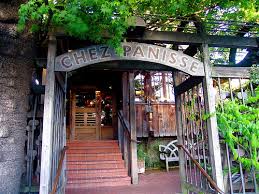
Berkeley After Dark is about the connection between the history of farm-to-table eating and the campus community. UC Berkeley alum Alice Waters helped pioneer the concept of eating local, seasonal, and organic food at her restaurant, Chez Panisse, located just a few blocks from campus on Shattuck Avenue. This grew out of her combined love of feeding people and political activism, and evolved into a culinary revolution. And it couldn’t have happened without UC Berkeley. The intertwined history between campus and the community gave Chez Panisse an audience, and a workforce, creating a symbiotic relationship.
This episode includes audio from the Oral History Center of The Bancroft Library, including Christopher Lee, Narsai David, and Dylan O’Brien. Voiceover of Marion Cunningham’s interview by Amanda Tewes and Paul Bertolli’s interview by John Fragola. Supplemental interviews with Chris Ying. (Written version of Berkeley After Dark.)
Over the decades, the Oral History Center has conducted 4,000 interviews on almost every topic imaginable. As part of UC Berkeley’s commitment to open access, the transcripts are available to researchers and the public at no cost, and almost all of the transcripts are available online. Search our vast collection.
Viewing History through Photographic Negatives: One Chapter in the Travels of the Black Panther Party International Section
A guest posting by Bancroft researcher E. Rafael Perez
We are happy to present a guest posting by researcher E. Rafael Perez, who shares his experience viewing original photographic negatives in the Bancroft reading room. Negatives, often with no matching prints extant, are made available by appointment with a week’s notice. Researchers may make their own reference snapshots for personal study, as illustrated below, and may place photo orders for high quality digital imaging of selected items.
Since being acquired by the Bancroft Library, the Eldridge Cleaver Papers have given scholars a glimpse into his eclectic experiences. Spanning his early days as Minister of Information for the Black Panther Party, continuing into his time in exile as head of the Black Panther Party’s International Section, and following right on through to his eventual return to the United States—after which he served time in prison, became a born-again Christian and made appearances in support of the Republican Party—the Cleaver Papers and the Eldridge Cleaver Photograph Collection provide context into a complex and layered life. The rarely-seen photographic negatives found in the Eldridge Cleaver Photograph Collection provide consequential traces of life events not covered by other parts of the collection.
For the uninitiated, photographic negatives are the in-camera originals of 20th century photography, in the form of sheets or strips of film in which the darkest areas of a photographed subject appear lightest and the lightest appear darkest. At the Bancroft Library, negatives are stored at 40 degrees Fahrenheit and 30 percent relative humidity. Interested parties make an appointment ahead of time to schedule a viewing, as negatives must spend some time acclimatizing before use. This process highlights archivists’ challenge of balancing the best practices of presentation to the researcher and the best methods of preservation. Nevertheless, examining the over 480 35-millimeter negatives of the Eldridge Cleaver Photograph Collection provides fertile ground for historical exploration.


In 1970 Eldridge and Kathleen Cleaver traveled to North Korea, in part because Eldridge had helped organize the United States Anti-Imperialist Delegation. The delegation traveled between North Korea, China, the USSR, and Vietnam in search of models of self-sufficiency during the Cold War. The delegation consisted of representatives from various political and media organizations. (A full list of delegation participants is available online via the Wilson Center.) At the time, North Korea sought to project itself as a model for postcolonial development to the decolonizing world. Cleaver’s own disillusionment with this vision of North Korea would not come until later, a shift that is also covered in the Cleaver Papers. While some may believe the photographic negatives to be the unfinished and inconvenient templates of the photograph collection, the negatives provide more possibilities for analysis through their many unprinted strips.
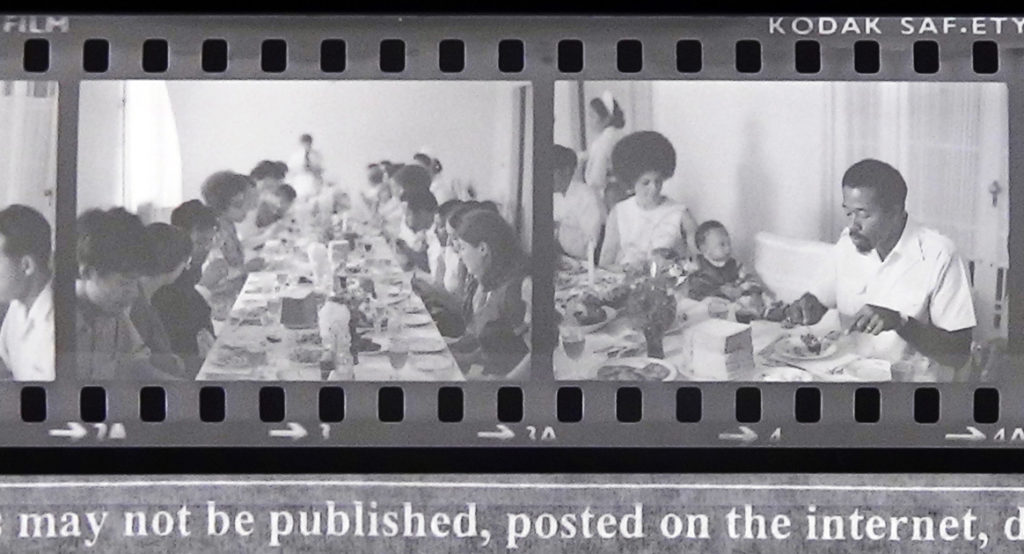
One example of the usefulness of the Cleaver negatives is a series, reproduced in part here, that depicts a birthday party held for Kathleen and Eldridge Cleaver’s son Maceo. The negatives provide an intimate portrait of the event, as the family is flanked by Korean and American attendees. Though these photographs were apparently not printed by Cleaver, we see through them a new thread of information that helps us piece together the visual history of Cleaver’s travels and, more broadly, the exchanges between the Black Panther Party’s International Section and solidarity movements among nations of Asia, Africa, and Latin America.

Rather than using images to simply supplement textual evidence in historical writing, this instance reveals the possibilities for expanding narratives through visual histories. How might we more frequently incorporate the use of photography in its rawest and least edited form—the negative—as a source in the study of history? How might we seek to incorporate visual resources into narratives while still maintaining a critical lens regarding these events? To begin to answer these questions as a community, researchers might begin to look for similar threads within their own source bases.
References
- Bloom, Joshua and Waldo E. Martin. Black Against Empire: The History and the Politics of the Black Panther Party. Berkeley: University of California Press, c2013.
- Malloy, Sean. Out of Oakland: Black Panther Party Internationalism During the Cold War. Ithaca: Cornell University Press, 2017.
- Wu, Judy Tzu-Chun. Radicals on the Road: Internationalism, Orientalism, and Feminism during the Vietnam Era. Ithaca: Cornell University Press, 2013.
- Young, Benjamin. “Juche in the United States: The Black Panther Party’s Relations with North Korea, 1969-1971.” In The Asia-Pacific Journal, Vol. 13, Issue 12, No. 2, March 30, 2015.
E. Rafael Perez is a PhD Candidate in the Department of History at the University of Chicago. He is a recipient of the 2018 Mellon Fellowships for Dissertation Research in Original Sources, administered by the Council on Library and Information Resources (CLIR). For more recommendations that reflect the recent rise of rigorous historical research related to the Black Panther International Section, please contact him at erp1[at]uchicago.edu.
Between the Devil and the Deep Blue Sea: This is Not a Fish Story , This is a Fish Story
What would it be like to fly halfway around the world on a non-stop flight from Newport, Oregon to Vestmannaeyjar, Iceland aboard a C-17 Air Force transport plane with a small crew of environmentalists, veterinarians, and an internationally famous 21-foot long, 10,000 lb. orca “killer whale”?
Detailed answers to that question and much, much more can be found in the Earth Island Institute records, a newly processed collection now open to researchers at The Bancroft Library.
Earth Island Institute is a Berkeley based non-profit conservation group founded in 1982 by David Brower that acts as an incubator to support a global network of ecological and social justice projects working to conserve, protect and restore the environment. Born in 1912, Brower entered the University of California at Berkeley at age 16 with a plan to study entomology, but due to financial pressures had to leave school by his sophomore year.
Located in the David Brower Center in downtown Berkeley, you may have walked by or visited the LEED Platinum rated building, read the Earth Island Journal publication, or be familiar with Earth Island’s work going back to the late 1980s on the dolphin-safe tuna campaigns. Those campaigns helped to heighten awareness of dolphin by-catch mortality levels during purse seine net and drift net fishing practices for tuna fish, reform marine mammal protection laws and establish the dolphin-safe tuna labels.
One of Earth Island’s other major projects began in 1994 after the film Free Willy was released by Warner Bros. and brought worldwide attention to the plight of captive marine mammals everywhere, although especially for the orca “killer whale” known as Keiko who starred as Willy. First captured off Iceland in 1979, Keiko was owned by Reino Adventura, a theme park in Mexico City, Mexico during the film’s production. After Earth Island Institute, numerous animal welfare groups, environmentalists and children from around the world rallied to free Keiko, Reino Adventura agreed to donate him to the newly formed “Free Willy Keiko Foundation” for a program of rehabilitation at the Oregon Coast Aquarium in Newport for eventual release back to the wild.
What happened to Keiko from then on is now in the historical record and up for research and debate. Although Keiko was released back into the wild, first into the Iceland sea pens in September 1998 and then into Iceland’s open waters, he died off the coast of Norway in December 2003 from pneumonia and possibly hunger, having lost the ability to fish for himself after being held captive so many decades. Since 1961, hundreds of killer whales, or orcas (actually a type of dolphin) have been captured and used in theme parks to entertain, and some would argue to educate, the public on the beauty and wonder of these magnificent beings.
As of 2018, there are approximately 60 captive orcas and countless dolphins and other marine mammals being held and used for entertainment at theme parks primarily in China, France, Japan, Russia, Spain and the United States. And yet, captive orcas are certainly not the only killer whales in harm’s way. As evidenced in a number of recent studies, films and news stories – orca populations in the wild are dwindling at rapid rates as declining fish stocks, marine pollution and other factors like increased shipping traffic have caused them to be at extreme risk for extinction. The time to learn about orcas, marine mammals, the greater ecosystem of our world environment and how we can improve life for all creatures of the land, air and sea is now!
The processing of the Earth Island Institute records is part of a two-year NHPRC-funded project to process a range of archival collections relating to environmental movements in the West. A leading repository in documenting U.S. environmental movements, The Bancroft Library is home to the records of many significant environmental organizations and the papers of a range of environmental activists.
Environmental Justice Grit in the Borderlands
Environmentalists make terrible neighbors, but great ancestors. – David Brower
It would be difficult not to notice a common thread of diligent, dogged persistence across the broad spectrum of environmental justice activism. This tenacity, coupled with a long view of the world and a whole lot of hard work, is what makes for some of the most successful environmental justice campaigns.
While success cannot be measured in one brief moment or win where environmental issues are concerned, each victory adds to the larger picture of global environmental awareness and health of the planet. Multiple stories of such environmental justice grit can be found in the collections at The Bancroft Library and one collection in particular is the newly opened records of Arizona Toxics Information.
Focused primarily on environmental concerns in the Arizona/Mexico border region during the 1970s through 1990s, Arizona Toxics Information was founded by conservationist Michael Gregory in 1990. The collection also includes materials collected by Gregory before Arizona Toxics Information was established when he worked with the Sierra Club Grand Canyon Chapter and grassroots environmental groups. Gregory had been employed by the United States Forest Service in the early 1970s and had witnessed the spraying of herbicide 2,4,5-T in national forests while he was stationed at fire outlook towers. 2,4,5-T is one of the main components of Agent Orange, which had already been banned for use in Vietnam due to its known harmful health effects and birth defects. From there, Gregory set about to research, collect information, write articles and lobby to end the practice of herbicide, pesticide and insecticide spraying in national forests and range lands.
In addition to the fight for pesticide use awareness and regulations, Arizona Toxics also ran several successful campaigns to shut down the Phelps-Dodge Corporation’s Douglas Reduction Works (copper smelter), the ENSCO hazardous waste management facility (PCB incinerator), and to improve the overall air and water quality of Arizona. As the Environmental Protection Agency’s Integrated Environmental Plan for the U.S.-Mexico Border Area and the North American Free Trade Agreement (NAFTA) were being drafted in the early 1990s, Arizona Toxics Information lobbied and organized grassroots groups on both sides of the border to share information and rally for a multitude of environmental commitments in the agreements. These commitments included providing the public the “right-to-know” about pollutants being released from factories on both sides of the United States-Mexico border, regulating maquiladoras (factories in Mexico that are generally owned and operated by foreign companies which assemble products often to be exported back to the country of that company), and developing emergency disaster plans to respond to hazardous waste accidents.
The current status of NAFTA casts some doubt on the future of these agreements. The opening of the records of Arizona Toxics Information provides timely documentation of hard-won environmental justice victories on the US-Mexico border.
The processing of the Arizona Toxics Information records is part of a two-year NHPRC-funded project to process a range of archival collections relating to environmental movements in the West. A leading repository in documenting U.S. environmental movements, The Bancroft Library is home to the records of many significant environmental organizations and the papers of a range of environmental activists.
NHPRC Supports Processing Environmental Collections at The Bancroft Library
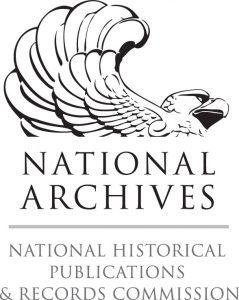
The Bancroft Library is currently engaged in a two-year project funded by the National Historical Publications and Records Commission to process a range of archival collections relating to environmental movements in the West. A leading repository in documenting U.S. environmental movements, The Bancroft Library is home to the records of many significant environmental organizations and the papers of a range of environmental activists.
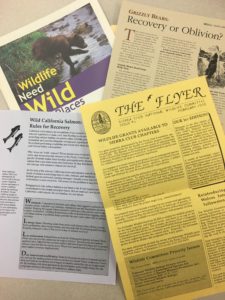
Among the library’s environmental holdings are the records of the Sierra Club, including correspondence of naturalist and Club founder John Muir, the records of the Save-the-Redwoods League, and the records of Save the Bay. Among the collections already made available to researchers in this current NHPRC-funded project are the records of the Coalition for Alternatives to Pesticides, the records of the Small Wilderness Area Preservation group, the papers of environmental lawyer Thomas J. Graff, and the records of California-based Trustees for Conservation. Collections scheduled to be processed in the next eighteen months include the records of such major environmental organizations as Friends of the River, Friends of the Earth, the Rainforest Action Network, and the Earth Island Institute.

